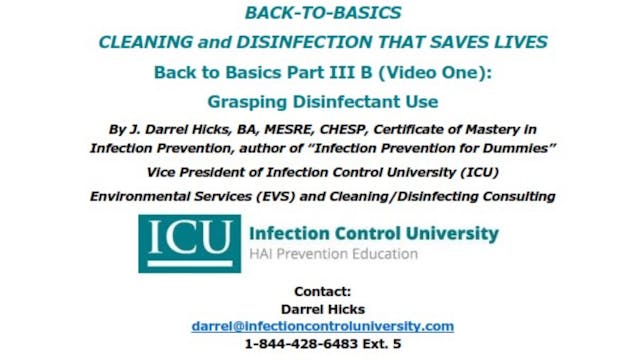Back to Basics Part II B (Video Two): Dust Removal and Floor Cleaning
Back to Basics: Cleaning/Disinfection Saving Lives
•
5m 56s
Clean is a condition free of unwanted matter that has the potential to cause an adverse or undesirable effect. Cleaning is the fundamental management process of putting unwanted matter in its proper place to achieve a clean condition. Your staff should understand these definitions and be able to deliver the desired outcomes on a consistent basis.
YES! Germs can fly!
Particles that cause airborne diseases are small enough to cling to the air. They hang on dust particles, moisture droplets, or on the breath until they are picked up. Common airborne diseases include influenza, the common cold, chickenpox, mumps, measles, and whooping cough. Uncommon airborne diseases include anthrax, diphtheria, and meningitis.
Up Next in Back to Basics: Cleaning/Disinfection Saving Lives
-
Back to Basics Part III A: Choosing a...
To Be Clear…It’s a Two-step Cleaning and Disinfecting Process
Many cleaning professionals have heard that a surface must be cleaned before applying a disinfectant. However, they might not know exactly why.
But before explaining the reasons, it will help to identify the differences between clea...
-
Back to Basics Part III B (Video One)...
Disease-causing microorganisms often live on inanimate objects. You use disinfectants to eliminate or greatly reduce these live pathogens and help prevent
the transmission of disease. A disinfectant is intended to destroy or neutralize one or more specific microbial groups.
In most cleaning sit...
-
Back to Basics Part III B (Video Two)...
We must start with the realization that the environmental surfaces in our world (even in a patient’s room) will never be free of disease-causing pathogens, although the manufacturers of UV-C or Hydrogen Peroxide Vapor (HPV) room disinfection systems make claims to the contrary. The fact is those ...



